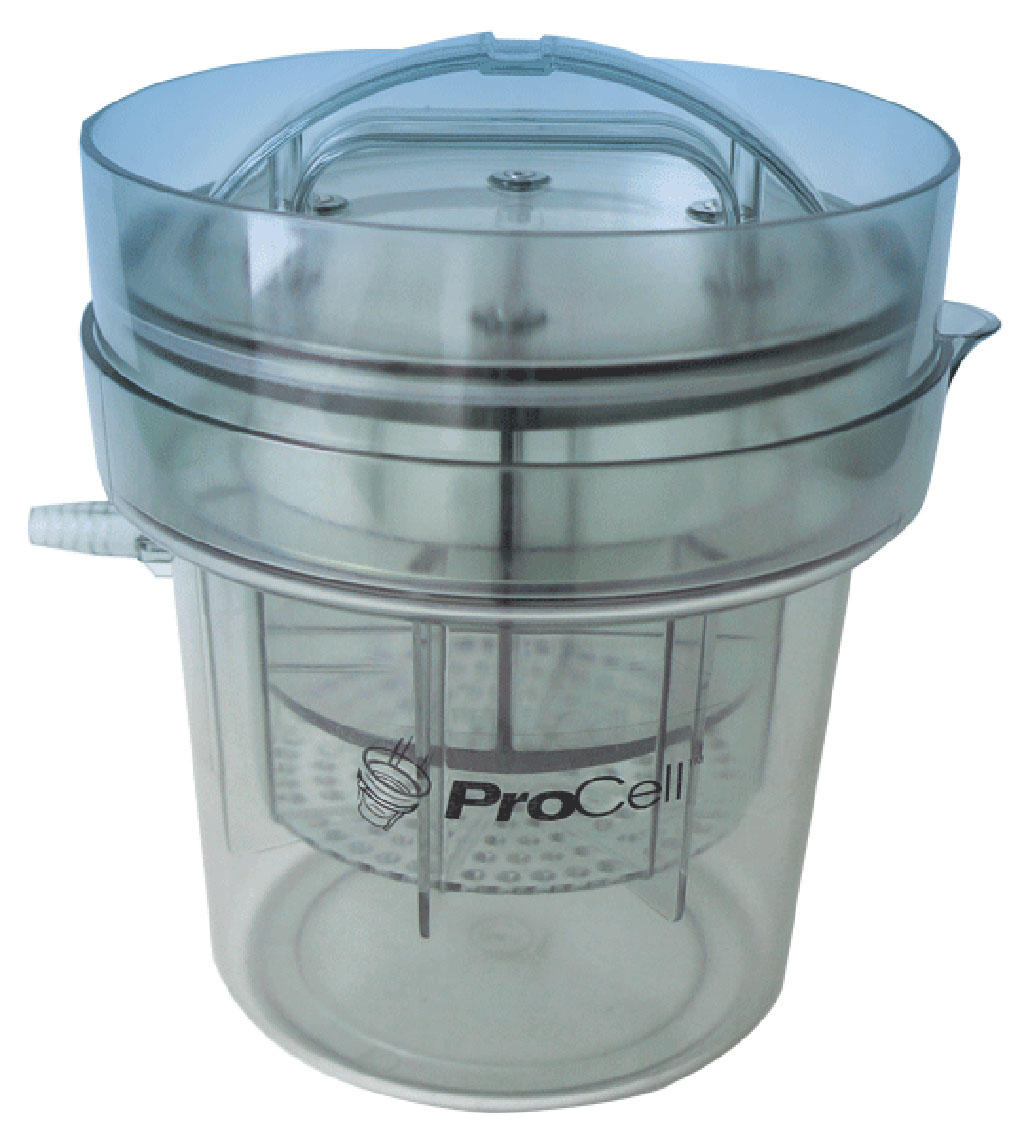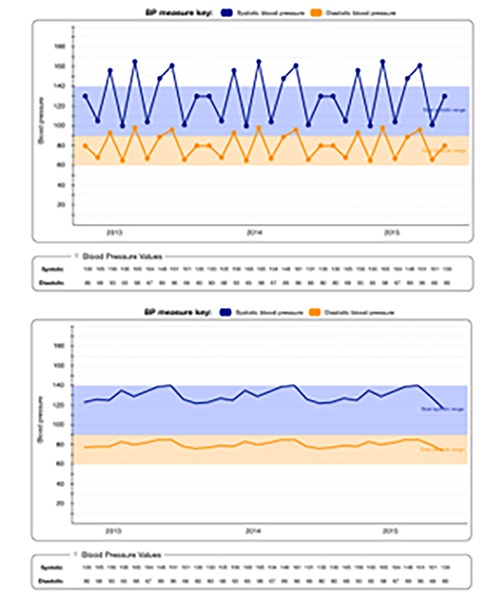New Device Conserves Blood During Surgery 
|
By HospiMedica International staff writers Posted on 22 Jun 2020 |

Image: The ProCell automated blood collection device (Photo courtesy of ProCell Surgical)
A novel vacuum device effectively automates the manual activity of surgical sponge-blood recovery for intraoperative auto transfusion (IAT).
The ProCell Surgical (Canton, MA, USA) ProCell is a sterile, compact and disposable medical device that comes fully assembled and includes just three components. To operate ProCell, up to five surgical sponges are placed inside the open basket and the lid is placed back in place. As OR vacuum suction tubing is connected, the lid is automatically deployed in a downward direction, which extracts the blood from the sponges. The collected blood is then sent back to the IAT equipment for processing by suctioning the blood from the reservoir via cannula.
The recovered blood is then reinfused from the IAT via its own suction tubing into the patient during that same surgical procedure. ProCell does not filter or otherwise process the blood collected in any way, and can be used up to 50 times during a single surgical case, processing up to 20 12” X 12” surgical sponges; it cannot be reprocessed for reuse. In addition to automating IAT and reducing the need for blood transfusions, ProCell also reduces potential occupational health hazards associated with hand-wringing, such as operator hand fatigue and messy blood splatter on surgical gloves and the OR area.
“ProCell Surgical's sponge blood recovery system brings the first automated innovation for sponge-blood recovery directly to the operating room table,” said co-inventor Robert Krensky, MD, CEO of ProCell Surgical. “It is easy to operate and can be used repeatedly during its single case use. ProCell essentially closes the technology gap that existed during this important preliminary phase of IAT.”
Unlike IAT, using transfused blood products beyond a level deemed medically necessary can increase complication rates, intensive care unit (ICU) stays, and overall length of hospitalization. Overuse can also substantially increase the cost of care, since the cost of a single unit of red blood cells (RBCs) can reach as high as USD 1,100 (when administration and supply costs are included).
Related Links:
ProCell Surgical
The ProCell Surgical (Canton, MA, USA) ProCell is a sterile, compact and disposable medical device that comes fully assembled and includes just three components. To operate ProCell, up to five surgical sponges are placed inside the open basket and the lid is placed back in place. As OR vacuum suction tubing is connected, the lid is automatically deployed in a downward direction, which extracts the blood from the sponges. The collected blood is then sent back to the IAT equipment for processing by suctioning the blood from the reservoir via cannula.
The recovered blood is then reinfused from the IAT via its own suction tubing into the patient during that same surgical procedure. ProCell does not filter or otherwise process the blood collected in any way, and can be used up to 50 times during a single surgical case, processing up to 20 12” X 12” surgical sponges; it cannot be reprocessed for reuse. In addition to automating IAT and reducing the need for blood transfusions, ProCell also reduces potential occupational health hazards associated with hand-wringing, such as operator hand fatigue and messy blood splatter on surgical gloves and the OR area.
“ProCell Surgical's sponge blood recovery system brings the first automated innovation for sponge-blood recovery directly to the operating room table,” said co-inventor Robert Krensky, MD, CEO of ProCell Surgical. “It is easy to operate and can be used repeatedly during its single case use. ProCell essentially closes the technology gap that existed during this important preliminary phase of IAT.”
Unlike IAT, using transfused blood products beyond a level deemed medically necessary can increase complication rates, intensive care unit (ICU) stays, and overall length of hospitalization. Overuse can also substantially increase the cost of care, since the cost of a single unit of red blood cells (RBCs) can reach as high as USD 1,100 (when administration and supply costs are included).
Related Links:
ProCell Surgical
Latest Surgical Techniques News
- DNA Origami Improves Imaging of Dense Pancreatic Tissue for Cancer Detection and Treatment
- Pioneering Sutureless Coronary Bypass Technology to Eliminate Open-Chest Procedures
- Intravascular Imaging for Guiding Stent Implantation Ensures Safer Stenting Procedures
- World's First AI Surgical Guidance Platform Allows Surgeons to Measure Success in Real-Time
- AI-Generated Synthetic Scarred Hearts Aid Atrial Fibrillation Treatment
- New Class of Bioadhesives to Connect Human Tissues to Long-Term Medical Implants
- New Transcatheter Valve Found Safe and Effective for Treating Aortic Regurgitation
- Minimally Invasive Valve Repair Reduces Hospitalizations in Severe Tricuspid Regurgitation Patients
- Tiny Robotic Tools Powered by Magnetic Fields to Enable Minimally Invasive Brain Surgery
- Magnetic Tweezers Make Robotic Surgery Safer and More Precise
- AI-Powered Surgical Planning Tool Improves Pre-Op Planning
- Novel Sensing System Restores Missing Sense of Touch in Minimally Invasive Surgery
- Headset-Based AR Navigation System Improves EVD Placement
- Higher Electrode Density Improves Epilepsy Surgery by Pinpointing Where Seizures Begin
- Open-Source Tool Optimizes Placement of Visual Brain Implants
- Easy-To-Apply Gel Could Prevent Formation of Post-Surgical Abdominal Adhesions
Channels
Critical Care
view channel
Breakthrough AI Technology Accurately Assesses Heart Failure Severity
Heart failure (HF) is a complex condition where the heart cannot effectively pump blood to meet the body’s needs due to underlying medical issues. It is marked by recurring episodes and frequent hospitalizations.... Read more
New Approach to Visualizing Blood Pressure Data Can Help Better Manage Hypertension Patients
Sometimes, a patient’s blood pressure may be elevated in a doctor's office but normal at home, a phenomenon known as white coat hypertension. It is estimated that 10% to 20% of high blood pressure diagnoses... Read morePatient Care
view channel
Portable Biosensor Platform to Reduce Hospital-Acquired Infections
Approximately 4 million patients in the European Union acquire healthcare-associated infections (HAIs) or nosocomial infections each year, with around 37,000 deaths directly resulting from these infections,... Read moreFirst-Of-Its-Kind Portable Germicidal Light Technology Disinfects High-Touch Clinical Surfaces in Seconds
Reducing healthcare-acquired infections (HAIs) remains a pressing issue within global healthcare systems. In the United States alone, 1.7 million patients contract HAIs annually, leading to approximately... Read more
Surgical Capacity Optimization Solution Helps Hospitals Boost OR Utilization
An innovative solution has the capability to transform surgical capacity utilization by targeting the root cause of surgical block time inefficiencies. Fujitsu Limited’s (Tokyo, Japan) Surgical Capacity... Read more
Game-Changing Innovation in Surgical Instrument Sterilization Significantly Improves OR Throughput
A groundbreaking innovation enables hospitals to significantly improve instrument processing time and throughput in operating rooms (ORs) and sterile processing departments. Turbett Surgical, Inc.... Read moreHealth IT
view channel
Printable Molecule-Selective Nanoparticles Enable Mass Production of Wearable Biosensors
The future of medicine is likely to focus on the personalization of healthcare—understanding exactly what an individual requires and delivering the appropriate combination of nutrients, metabolites, and... Read more
Smartwatches Could Detect Congestive Heart Failure
Diagnosing congestive heart failure (CHF) typically requires expensive and time-consuming imaging techniques like echocardiography, also known as cardiac ultrasound. Previously, detecting CHF by analyzing... Read moreBusiness
view channel
Expanded Collaboration to Transform OR Technology Through AI and Automation
The expansion of an existing collaboration between three leading companies aims to develop artificial intelligence (AI)-driven solutions for smart operating rooms with sophisticated monitoring and automation.... Read more

















